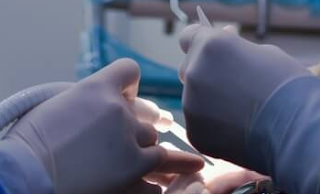Bone grafting is a surgical process in which damaged or broken bones are repaired and replaced using transplanted bone. Bone grafts can be used to fix bones in almost any part of your body. Your surgeon may harvest bone from your legs, hips, or ribcage in order to execute the grafting. When performing bone grafting, surgeons may sometimes use bone tissue that has been donated from cadavers.
The majority of your skeleton is made up of a bone matrix. This is the tough material that contributes to the bone's ability to withstand pressure. The matrix contains active bone cells. This matrix is developed and maintained by these cells. When required, these cells in the matrix can aid in bone regeneration and healing.
When a bone is fractured, the process of recovery begins immediately. It is possible for your bone cells to heal a small fracture in your bone. On the other hand, a fracture can occasionally result in a significant loss of bone, such as when a sizeable portion of the bone breaks away. Without a bone graft, your bone may not be able to repair properly under certain circumstances.

When a bone needs to repair or connect together, your surgeon will perform a procedure called bone grafting. During this procedure, the surgeon will place a new piece of bone in the area. The cells within the new bone can then bind with the old bone and form a seal.
Cadaver Bone Grafting Pros
- Allograft bone (cadaver bone) is available in a wide variety of forms and dimensions, allowing it to be precisely tailored to the specific region of the spine in which it is required.
- Allograft bones (cadaver bone) are generally effective in stimulating bone healing.
- Donor's bone is rarely rejected because it is already dead and is only used to help the new bone growth. It is not necessary to include any cells or proteins in this transplant in order to promote growth.
- It is also extremely rare for illnesses to be passed on from the donor's bone.
- Bone grafting may be required for a variety of medical conditions in order to aid in the healing and growth of the bone. The following are some examples of conditions that may necessitate the use of bone graft:
- First, your doctor suspects that you have a fracture that will not heal without the use of a graft.
- A fracture that you had in the past but did not get treated with a graft, which resulted in the fracture not healing properly.
- Osteonecrosis and malignancy of the bone
- To aid in the development of bone surrounding a surgically implanted object, such as a total knee replacement
- These bone grafts have the potential to serve as a support structure for the development of new, living bone. Bone grafting is typically performed on the hips, knees, and spine; however, you may require bone grafting for a bone that is located elsewhere in your body.
Cadaver Bone Grafting Cons
- Bone grafting is normally safe, however, there are a few instances where it can be dangerous.
- Sepsis
- Hemorrhage
- Anesthesia-related problems
- Infection caused by the bone that was donated (very rare)
- Even after receiving a bone graft, there is still the possibility that your bone will not heal properly. The precise reason you require a bone graft will largely determine the specific hazards you will be exposed to. These factors include the use of donor tissue, the presence of other medical disorders, and age. For instance, your bone graft may not repair as effectively if you smoke or have diabetes.







0 Comments
For comments please reply here.......